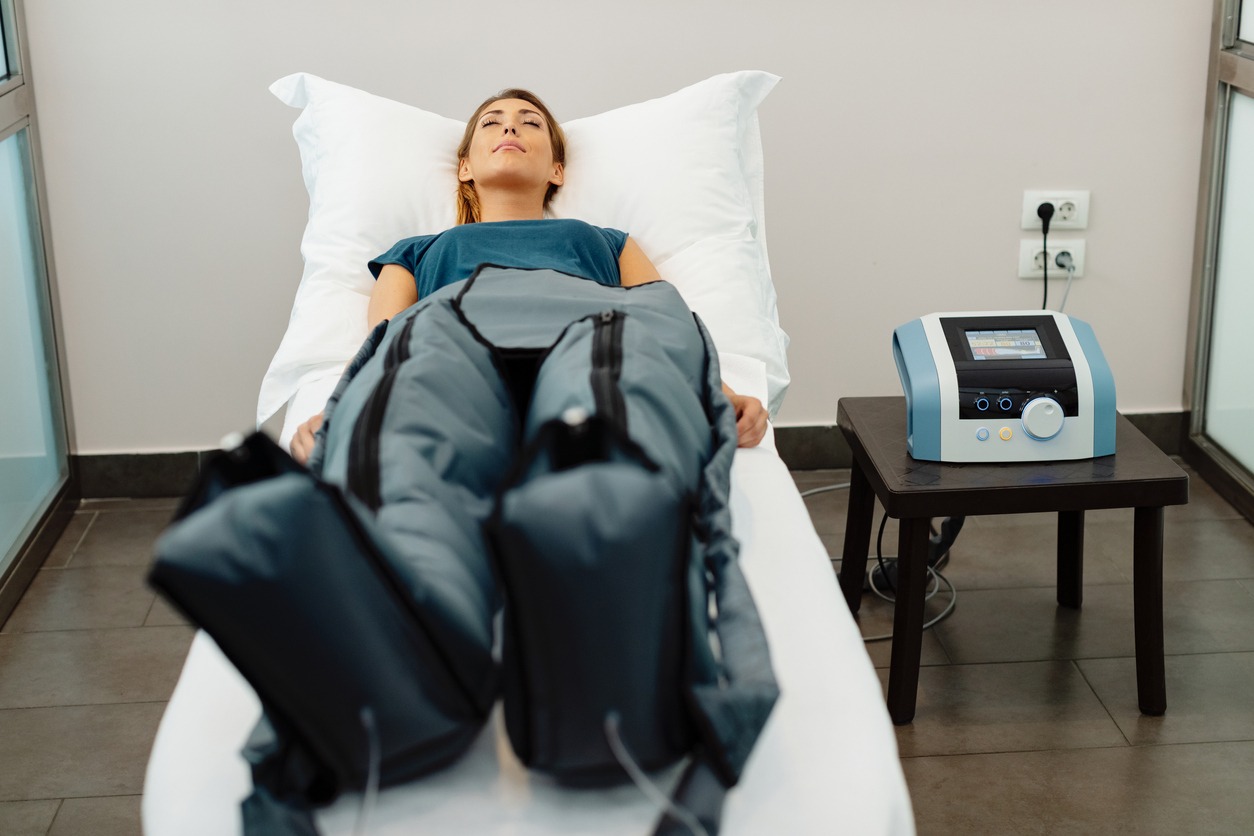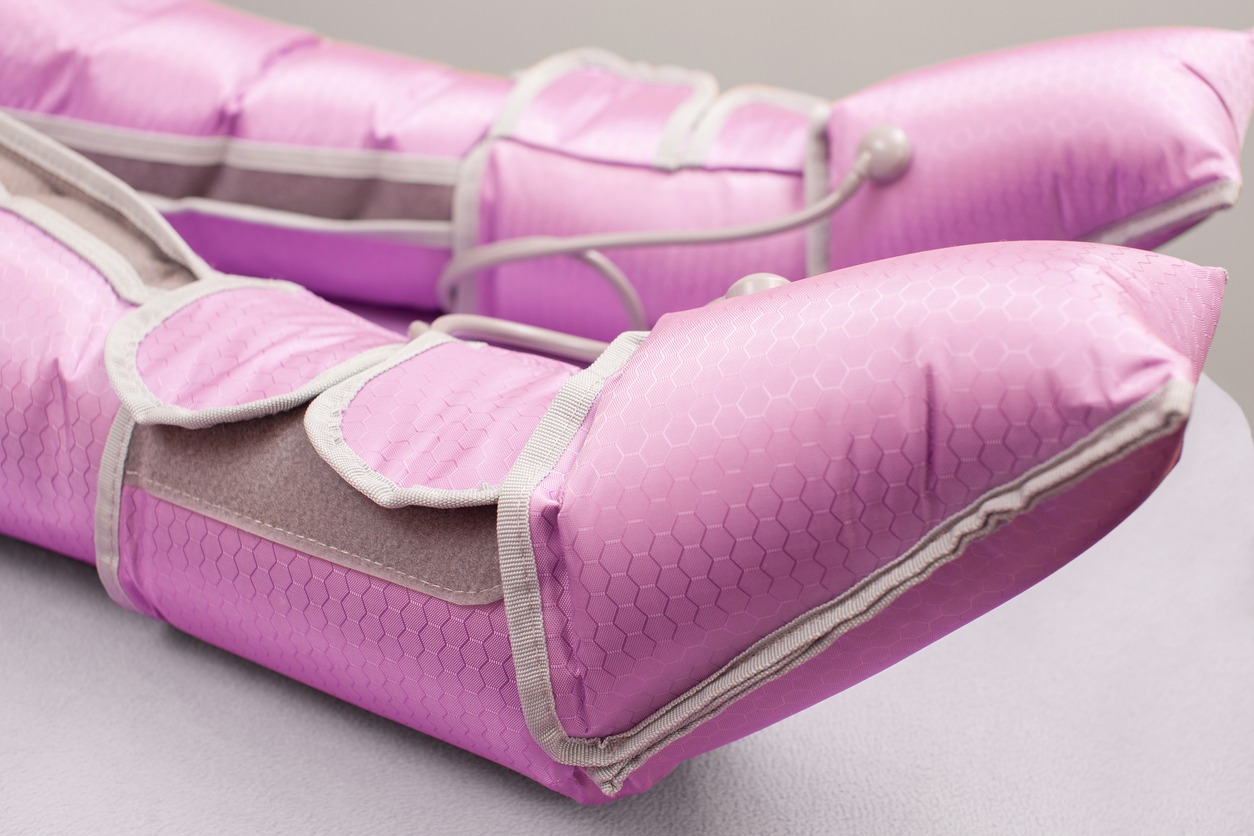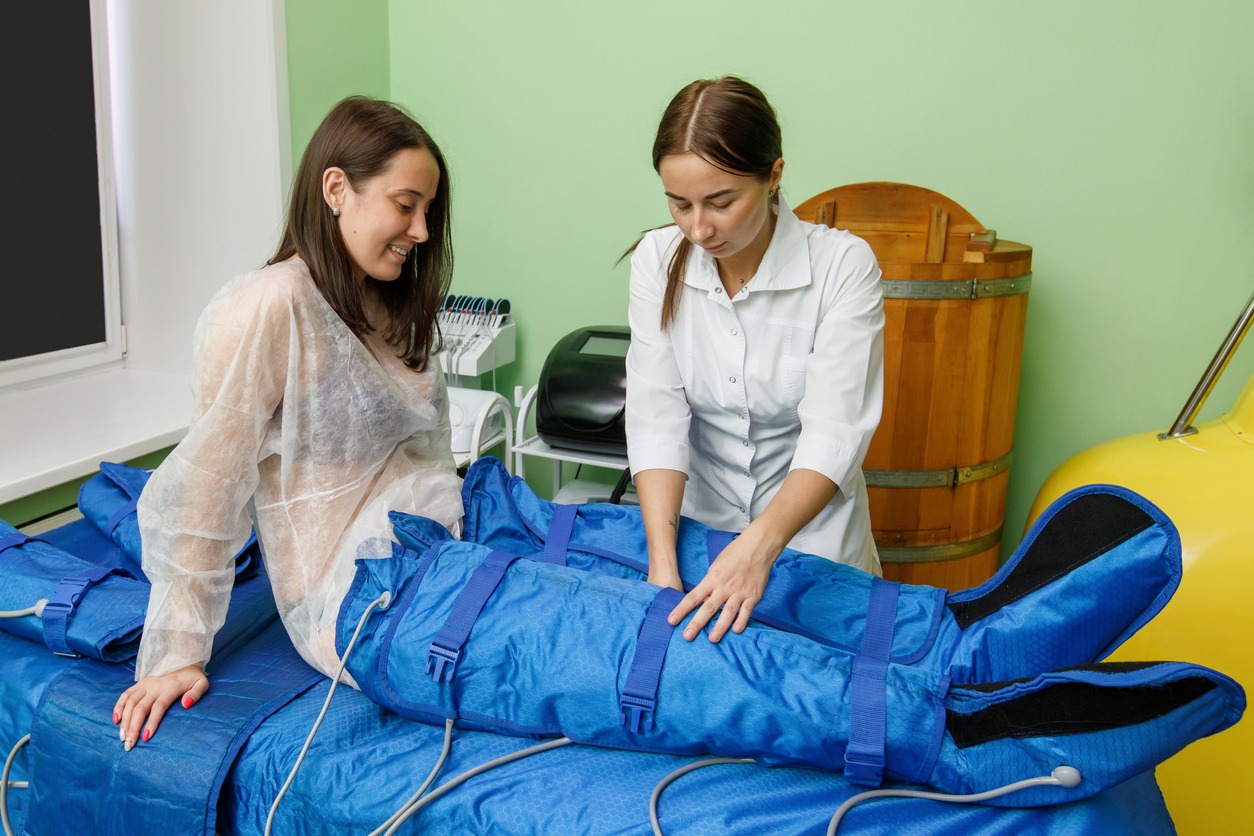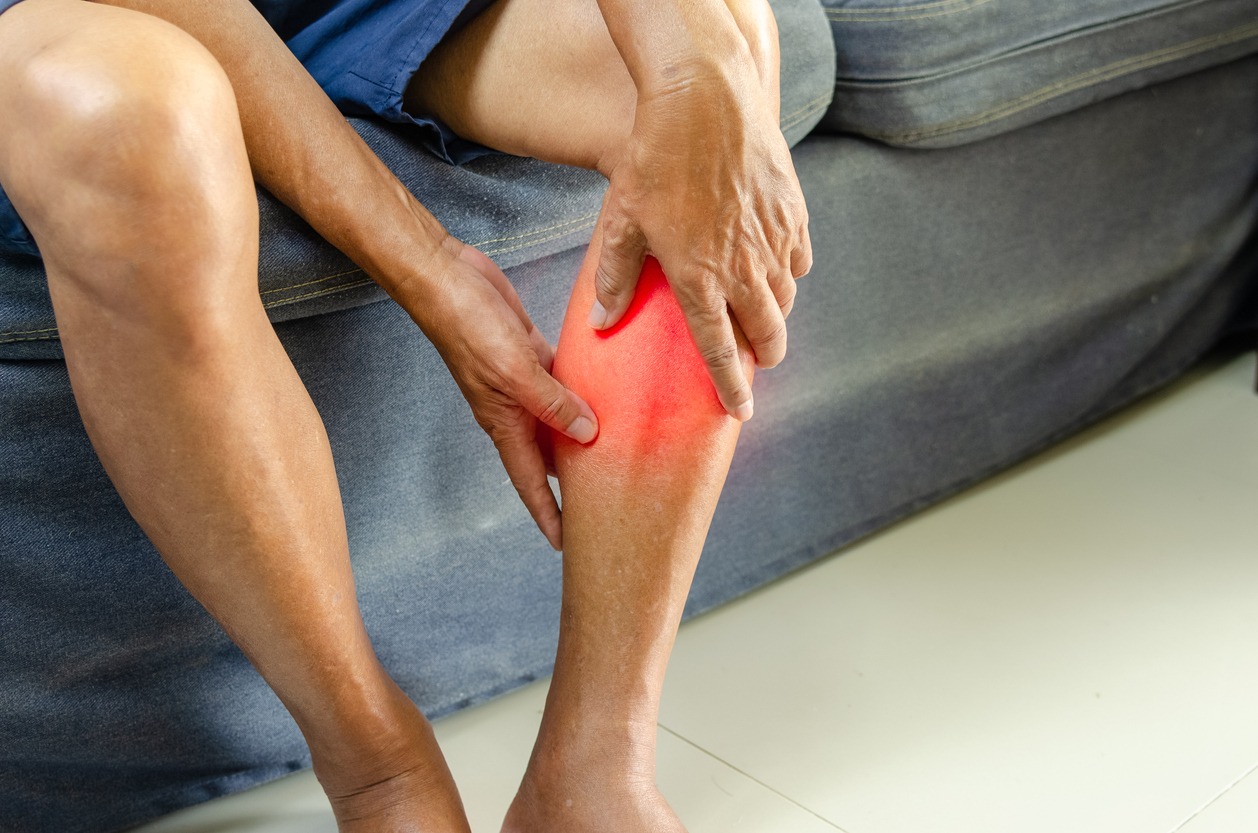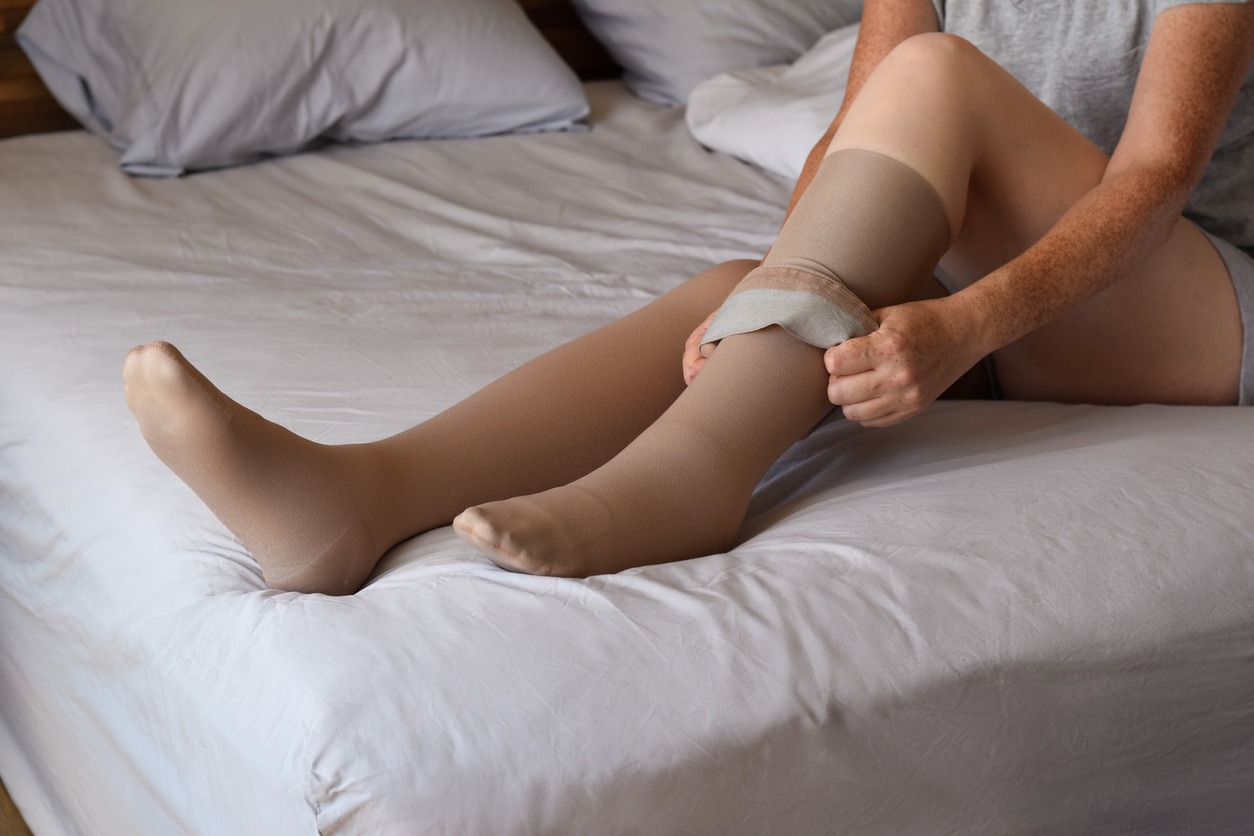Disclaimer: This article is for informational and educational purposes only and does not substitute professional medical advice. It is important to always consult a medical professional for any health issues.
As people age, different health issues are experienced, which include aches and pains in different parts of the body. Older adults commonly experience pain, inflammation, and swelling in the legs, which can sometimes affect day-to-day activities and tasks. There are many different reasons behind these pains, such as poor circulation, injury, trauma, wear and tear, overuse, blood clots, and varicose veins, to name a few. If you often experience pain, swelling, and inflammation in your legs, you may find compression therapy beneficial.
Blood and lymph pooling in the legs may lead to different health problems, which can range from mild discomfort to severe sores and clots. No matter the reason for your leg swelling, compression therapy may alleviate the symptoms and prevent further problems from occurring. When your lower extremities lack proper circulation, it may lead to many other serious conditions. Therefore, the sooner you take care of your condition, the better.
If you have been hearing about compression therapy and are looking for more information about how it can help with your aches and pains, we are here to help you. In this post, we are giving you the benefits of compression therapy.
What is Compression Therapy?
Compression therapy pertains to a non-invasive way to treat different conditions that cause poor circulation in the body. It is done through the use of various compression garments, including gloves, sleeves, and stockings, to reduce pain and improve blood flow. The pressure is generally graduated. This means that it starts tighter at the furthest point and slowly loosens as the garment comes closer to the body.
The graduated compression works to prevent venous blood from pooling in the veins. It also encourages the blood to return to the heart for circulation. [1] There are many conditions that are caused by a lack of proper circulation in the lower extremities. When blood is not pumped back to the heart, it pools in the legs, which causes inflammation, swelling, and sometimes even infections. When the veins are weakened, they are unable to pump the fluid properly in an upward direction. This results in stagnation, which may lead to painful bulging veins and sores. [2]
Compression garments are usually worn during the day and are best for people who are on their feet for long periods. With better blood flow to the legs, there will be better wound healing and support for the veins and lymph vessels. [1]
Benefits of Compression Therapy
Compression therapy can be useful for many situations and for people from all walks of life. It is very useful as it offers a lot of benefits than you might expect. If you are wondering how compression therapy may help people, below are its different benefits:
Lessens the Appearance of Veins
According to scientists, patients can reduce the appearance of visible veins dramatically by using compression therapies regularly. [3] Since the veins are developed when pressure builds in the veins, causing them to twist and become engorges, compression helps in reducing the built-up pressure. In addition to that, it also helps blood flow more smoothly. This way, the appearance of veins can be reduced.
Prevents and Reduces the Appearance of Cellulite
For a lot of people, cellulite is very annoying. Scientists are still trying to identify its causes, but there are a few indications that blood circulation plays an essential role. Based on a few recent studies, compression therapy can be used to reduce and prevent cellulite from appearing. [3]
Relieves Pain
Compression therapy may help relieve pain. It’s because when garments or other technology compress the muscles, it forces the blood to go back to the heart. With this, the muscles in your body will feel lighter, which relieves discomfort, as well.
Keep Muscles Warm and Increases Flexibility
Compression therapy may also keep the muscles warm, which is great for athletes. When the muscles are warm, they are more flexible and have a wider range of motion.
Faster Recovery
When the veins are compressed, blood moves faster through the system. With this, lactic acid and other wastes that build in the tissues are carried away in the veins and back toward the heart. In addition to that, compression therapy also helps drain metabolic wastes more efficiently, which helps people recover faster. This is great if you are recovering after an intense workout or after a particular surgery.
Provide More Oxygen in the Muscles
According to medical studies, compression increases the amount of oxygen found in the muscles. Oxygen is fuel for the muscles, and it also aids in healing any soreness after exertion. [3]
Increases Body Awareness
Fascinatingly, studies have found that people using compression therapies feel more in tune with their bodies than those who don’t. [3] This is because compression therapy puts pressure on the skin and they activate receptors that communicate with your brain. It tells you exactly where your arms, hands, legs, and feet are and what they are doing.
Less Dizziness and Nausea
When your blood pressure drops when you stand up, it is referred to as orthostatic hypotension. This makes you feel dizzy, lightheaded, or nauseous. If you often experience this, compression therapy is a good option. It can keep the blood from pooling in your legs, which also causes orthostatic hypotension. In fact, based on a study, pregnant women had less morning sickness and dizziness when they wore compression stockings. [4]
Helps Heal Leg Ulcers
Ulcers pertain to open wounds on the skin that are usually difficult to heal. These ulcers can be caused by various health conditions, such as vein problems, diabetes, heart disease, high blood pressure, and kidney failure. For leg ulcers, compression therapy can be an effective treatment. It helps leg ulcers to heal by improving blood flow. During the healing process, compression therapy reduces the symptoms, such as swelling, pain, and itching. [4]
Conditions That May Be Improved With Compression Therapy
Compression therapy can be used to manage or treat several conditions. If you are dealing with the following conditions, you may talk to your doctor about how compression may help you:
Inflammation
The body’s way of fighting against things that it deems harmful, such as injuries and infections, is through inflammation. This condition includes redness, warmth, swelling, and pain. However, keep in mind that compression is unable to cure the underlying cause of inflammation, but it can help manage the symptoms. You can use a compression garment over the swollen areas, but you need to avoid any open wounds or compressing too tightly. This way, the pressure will encourage circulation and improve healing times.
Even though there are various parts of the body that are susceptible to inflammation, the lower legs are among the most common areas treated with compression therapy. Some of the most common causes of leg inflammation include sitting or standing for long periods and pregnancy. By massaging the lower legs and feet through compression, the blood will keep circulating, preventing inflammation. [1]
Arthritis and Joint Pain
Arthritis and joint pain are among the most common conditions experienced by older adults, and these may interfere with their daily tasks. A lot of sufferers find that compression helps support their joints and lessens the swelling that comes with arthritis. If you are experiencing hand arthritis, you may try wearing compression gloves during the day to reduce pain. For those who feel pain elsewhere, using compression sleeves or an elastic bandage may help you find relief. [1]
Varicose Veins
Varicose veins develop due to chronic venous insufficiency. It is a type of venous disease where the veins near the surface of the legs become dilated or enlarged. The blood pools within the veins as the valves in the vessels do not work properly. This results in large, purplish veins that are painful. Through compression therapy, pressure is placed against these veins to support them. The pressure also encourages the pooling blood to go back to the heart for better circulation. [1]
Venous Leg Ulcers
This is a type of wound that usually develops on the inside of the leg, above the ankle. It starts out as a rash that can be itchy, then transitions to an open wound. The skin around it can be hard and discolored. For this condition, compression therapy can be a good preventive treatment since these are associated with varicose veins and other vessel abnormalities. Compression therapy may encourage blood to return to the heart for it to circulate better. [1]
Lymphedema
This is a health condition that affects the lymphatic vessels. The lymphatic system is a complex arrangement of vessels that carry lymph throughout the body. Lymphedema happens when there is a blockage in the vessel or as a result of lymph node removal, which causes swelling. Through compression therapy, pressure will be applied to the affected area, which limits the amount of lymphatic fluid that can pool in the space and encourage it to go back to a drainage area. [1]
Edema
This condition is quite similar to lymphedema. However, it involves blood vessels instead of lymphatic vessels. Edema forms when fluid leaks out from the blood vessels and collects in nearby tissues. Through compression therapy, the amount of fluid that gathers in the tissue will be limited, which will encourage them to go back into the blood vessels to be circulated through the body. [1]
Diabetes
Diabetes is a type of health condition that may cause a decrease in circulation, produce venous insufficiency, and may even lead to nerve damage. With the lack of circulation and malfunction of the veins, painful swelling may occur. When there is nerve damage, it is easier to cut or injure yourself, which may lead to infected wounds and serious problems. That is why the use of compression stockings is often recommended for people with diabetes in order to maintain healthy leg circulation and nerve sensitivity, which helps prevent painful sores and accidents. [2]
Lower Extremity Wounds and Ulcers
When you have poor circulation, a simple cut can turn into an infected and growing wound that can linger for a long time. Since the veins are not functioning well, the wound gets worse over time instead of better. Compression therapy can help in healing these wounds as they assist in pumping out waste material and stagnant blood so that oxygenated blood and fresh lymph may come into the area, clean it out, and begin to repair the damaged tissue. [2]
Athletic Recovery
A lot of athletes use compression therapy during or after exercise to improve their recovery times, along with other conservative treatments, such as massages and alternating hot and cold therapy. Since compression therapy helps improve blood circulation, it may also help in muscle recovery and reduce soreness. Therefore, if you are experiencing muscle soreness, you may want to try wearing a compression sleeve during your next workout to see if you will experience less pain and recover faster. [1]
Different Types of Compression Aids
There are several different ways to do compression therapy with the use of various tools. If you want to learn more about these, below are the different types of compression aids that you may use:
Sequential Compression Devices
These devices are quite popular among athletes as they are used for improving recovery. They can provide intermittent pneumatic compression to the legs through inflatable sleeves. Sequential compression devices are also used in hospital settings when patients are bedridden due to illness or surgery. However, these devices are expensive. But you can try them out at physical therapy offices and recovery spas.
Compression Stockings
These are the most commonly used compression therapy tools. They are easy to find and affordable. There are also different colors and sizes of compression stockings. They are great for those who are dealing with varicose veins, leg pains, and people who are sitting or standing for long periods. Compression stockings can be used for long periods, making them great for all-day wear and travel.
Compression Gloves
These are also called arthritis gloves. They are worn to decrease the pain caused by arthritis and carpal tunnel symptoms, such as swelling and achy joints. Compression gloves can be worn throughout the day or even overnight to help improve circulation in the hands, wrists, and fingers.
Compression Sleeves
Compression sleeves can be worn on the knees, wrists, calves, and elbows. They come in various styles and materials, but all of them are designed to promote blood flow and protect vulnerable joints. Compression sleeves are commonly used by athletes and those who are looking to improve recovery after exercise.
Compression Braces
Wearing these can help you achieve the same results as a compression sleeve, but they tend to cover a smaller area and limit mobility. Depending on your needs, compression braces can either be right for you or not. Some might prefer using them due to their adjustability and stability, especially those who are dealing with an injury.
Compression Socks
These are knee-high socks that encompass the calf muscles. They are similar to compression stockings but thicker. They are usually used by runners to help keep their blood circulating through the legs when they run.
Compression Bandages
These are elastic wraps that can be used on either the arms or legs. These are versatile compression aids that are appealing to those who are suffering from swelling in different parts of the body.
Risks of Compression Therapy
Compression therapy is a safe and useful treatment option for a lot of people. However, you need to note that it is not for everyone. People who suffer from blood clots or deep vein thrombosis should talk to their doctors first when it comes to using compression tools. Aside from that, other contraindications for compression include arterial disease, peripheral neuropathy, sensitive skin, and open wounds. [1]
Some of the risks of compression therapy include skin irritation, bacterial or fungal infection, discomfort or pain, and swelling of the lower foot and toe area. There are also some rare, severe side effects that might occur if the tools are not used properly. These may include nerve damage, soft tissue damage, and superficial thromboembolism. Therefore, before you decide to undergo compression therapy, it is better to consult with your doctor first to know if it is safe for your condition.
Conclusion
Compression therapy, especially for the lower legs, is a helpful way to improve blood flow. It may help reduce the pain and swelling associated with poor circulation. Therefore, if your arms or legs are swollen and painful, maybe you may want to try compression therapy. But first, make sure to talk to your doctor to determine the cause of the pain and swelling you are experiencing in order to come up with an effective treatment plan. If compression therapy is among the options, ensure that you look for a device that will suit your needs. We hope this post helped you learn more about the benefits of compression therapy.
In addition to compression therapy, foot massage is also a good way to improve your body’s blood circulation. Check out our Guide to Selecting the Right Foot Massage Solutions to learn more about this.
References
[1] Hegg, J. (2021, June 2). Guide to compression therapy. Vive Health. Retrieved February 27, 2023, from https://www.vivehealth.com/blogs/resources/compression-therapy
[2] Commonwealth Vein Center, E. (2020). Who can benefit from compression therapy? Who Can Benefit From Compression Therapy? Commonwealth Vein Center: Vascular, Vein and Wound Specialists. Retrieved February 27, 2023, from https://www.commonwealthveincenter.com/blog/who-can-benefit-from-compression-therapy
[3] Lee, M. (2020, August 30). The unexpected benefits of compression therapy. Mimi Lee M.D. PA. Retrieved February 27, 2023, from https://drmimilee.com/the-unexpected-benefits-of-compression-therapy/
[4] Brennan, D. (Ed.). (2021, May 3). Benefits of compression therapy: Better blood flow, less swelling, and more. WebMD. Retrieved February 27, 2023, from https://www.webmd.com/dvt/benefits-of-compression-therapy

